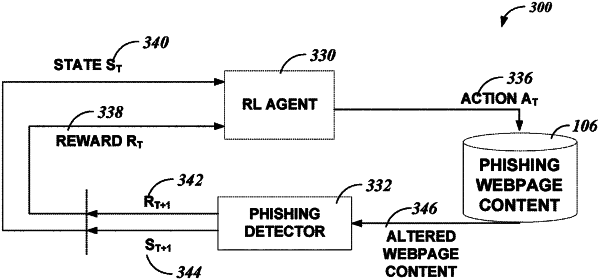| CPC H04L 63/1483 (2013.01) [G06N 3/043 (2023.01); G06N 3/084 (2013.01)] | 17 Claims |

|
1. A system comprising:
processing circuitry; and
a memory comprising instructions that, when executed by the processing circuitry, cause the processing circuitry to perform operations for phishing webpage content protection, the operations comprising:
determining, using an agent, an action that, when performed on first webpage content, makes the first webpage content evade phishing detection;
generating, based on the action and second webpage content that is different from the first webpage content, altered second webpage content by:
capturing web session traffic including the second webpage content, and
altering, based on the action, the second webpage content of the web session traffic resulting in the altered second webpage content; and
training, based on the altered second webpage content and a corresponding label of phishing, a phishing detector.
|